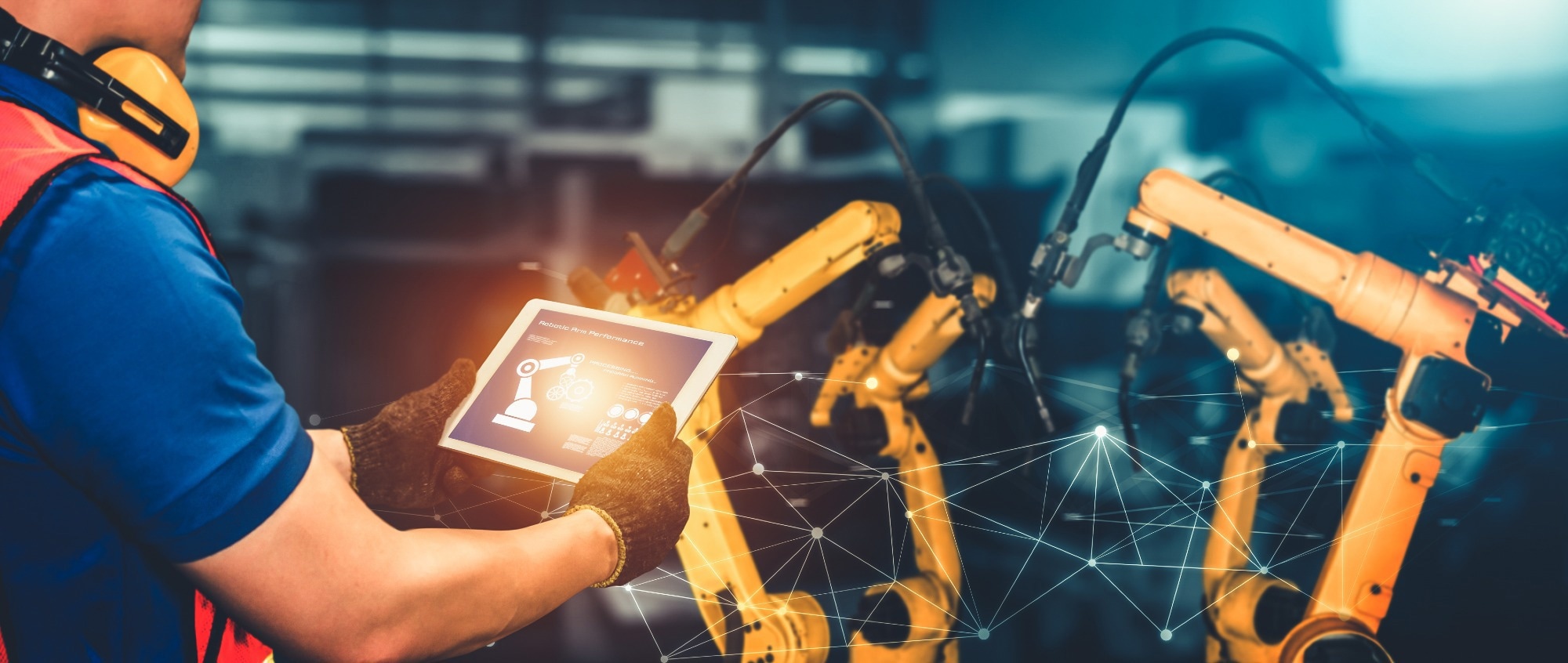Surface electromyography (sEMG) is a promising technology for muscle-controlled robots via human-machine interfaces (HMIs). It finds applications in prosthetics, robot control, and rehabilitation. In a recent publication in the journal Applied Sciences, researchers explored sEMG-based robot control, including signal processing, classification, and control strategies.
 Study: Empowering Muscle-Controlled Robots: Harnessing sEMG Technology. Image credit: Blue Planet Studio/Shutterstock
Study: Empowering Muscle-Controlled Robots: Harnessing sEMG Technology. Image credit: Blue Planet Studio/Shutterstock
Background
sEMG involves the summation of motor unit action potentials (MUAPs) over time and space, detectable through sEMG sensors. It has widespread use in fields such as rehabilitation and exercise physiology. Prior research highlights the limitations of non-invasive methods such as brain-computer interface technology (BCI) due to resolution issues, while invasive methods are effective but impractical for robot control. Other control signals, such as head, tongue, and eye movements, also have limitations.
As sEMG sensor technology advances, its practicality in device control grows. The sEMG signal, occurring before movement, predicts human motion for robot control. Applications include neurologically injured patient rehabilitation, stroke rehab training, exoskeleton control, and more. Challenges include signal instability and variability, hindering practical implementation. Researchers address questions about sEMG signal processing, robot control strategies, advantages, disadvantages, challenges, and future trends.
Exploring sEMG signal processing
Using raw sEMG signals for limb movement detection or robot control is hindered by their spatial and temporal complexity. Transforming sEMG signals into useful movement information involves data acquisition, pre-processing, feature extraction, potential dimensionality reduction, and pattern recognition. Data acquisition and pre-processing steps filter out noise and irrelevant muscle signals. Choosing appropriate feature sets from processed signals significantly impacts classifier accuracy, forming the core of pattern recognition. The techniques employed in each stage are as follows:
Data Acquisition: Previous studies have utilized various types of sEMG sensors. Single-channel sensors target specific muscle areas to minimize irrelevant muscle signals. High-density sensors, on the other hand, capture both spatial and temporal EMG data using electrode arrays. Commonly used commercial products include the Myo armband and those from Delsys, Inc. Muscle groups linked to major joints such as the knee, ankle, shoulder, and finger joints have received significant attention due to their relevance in daily activities. Maintaining consistent sensor positioning is crucial for reliable data collection.
Pre-processing: Pre-processing aims to filter signals, eliminating noise from sources such as electronic devices, ambient factors, motion artifacts, and cross-talk. The frequency band of 0 Hz to 500 Hz, with primary energy between 20 Hz and 150 Hz, contains the most valuable signal information. Butterworth filters, particularly band-pass filters, are commonly used. Some studies also incorporate notch filters to eliminate power frequency interference. Additional techniques involve placing electrodes on inactive muscles for baseline noise removal.
Feature Extraction: Signal segmentation is determined before feature extraction, often using overlapping windows of varying widths. Time domain (TD), frequency domain (FD), time-frequency domain (TFD) transformation, and entropy analyses are common for feature extraction. TD features are prevalent for muscle effort analysis, while FD features focus on muscle fatigue assessment. Combining TD and FD features can enhance classification accuracy.
Pattern Recognition: Pattern recognition employs machine-learning methods such as support vector machines (SVM), linear discriminant analysis (LDA), k-nearest neighbor (KNN), decision trees (DT), and various neural network architectures. Classifier selection and optimization vary based on specific scenarios. Comparative studies often evaluate multiple classifiers to identify the most suitable one.
Datasets: Research datasets are specific to the study's intent, but muscles such as biceps brachii, triceps brachii, and hand-related muscles are commonly studied. Datasets offer sEMG and kinematic data for forearm and hand activities. Additionally, datasets cover muscle activity during typing, push-ups, weightlifting, and rest. Hand gesture and upper limb movement datasets contribute to sEMG research across various studies.
Synchronized control strategies and methods
EMG's advantage in driving robots is its ability to capture bioelectric signals emitted during muscle contraction, enabling real-time robot control. Research extends to wearable dexterous hands and gloves, moving beyond mechanical arms and exoskeletons. Control strategies vary by device type, involving full-human continuous control (S1), semi-autonomous continuous control (S2), and discrete control (S3). S1 relies on muscle activation data; S2 combines sEMG with environment-sensing sensors; and S3 employs gestures for specific movements.
Control methods include human model-based (M1) and machine-learning-based (M2) approaches. While M1 estimates human motion using musculoskeletal models, M2 directly converts sEMG to joint angles or torques for robot control. This relationship between strategies and methods provides a comprehensive framework for sEMG-driven robot control.
sEMG signals: insights, challenges, and future directions
sEMG signals offer valuable insights into muscle activation, strength, limb control, impedance, and fatigue. Collected via skin-attached electrodes, they provide efficient data for device control, enabling real-time motion prediction. Even those with movement disorders benefit from residual muscle signals. However, challenges arise when applying sEMG for robotic arm control, including signal ambiguity due to muscle cross-talk and electrode positioning.
Tailored algorithms are necessary due to individual muscle differences. While preprocessing and feature selection have advanced, current research aims to improve pattern recognition and human-machine interfaces. Integrating sEMG for continuous robotic control is flexible but complex due to the intricate muscle-bone model. Clinical use involves biofeedback for conditions such as Parkinson's and stroke. sEMG's exploration in rehab, sports, and human-robot interaction is promising, fueled by technological advancements.
In summary, the current study explored signal processing, machine-learning-based pattern recognition, and robot control methods in the field of sEMG. It discussed pros, cons, research trends, and challenges. Due to variations in subjects and criteria, direct comparison of classification accuracy was limited and not included for clarity.